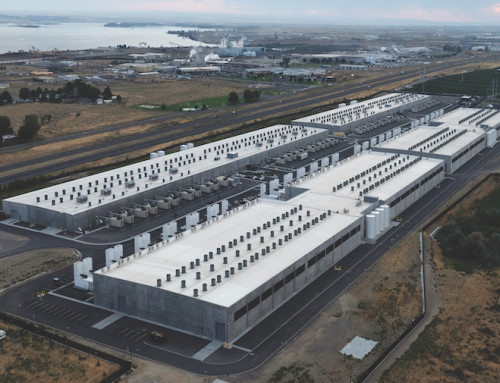WASHINGTON (AP) — The Labor Department last week reported that its producer price index — which measures inflation before it hits consumers— rose 0.9 percent last month from June, the biggest jump in more than three years.
Compared with a year earlier, wholesale prices were 3.3 percent higher.
The numbers were higher than economists had predicted.
Prices rose faster for producers than consumers last month, suggesting that American importers may, for now, be eating the cost of Trump’s tariffs rather than passing them on to customers.
That may not last.
“It will only be a matter of time before producers pass their higher tariff-related costs onto the backs of inflation-weary consumers,” wrote Christopher Rupkey, chief economist at fwdbonds, a financial markets research firm.
Excluding volatile food and energy prices, so-called core producer prices rose 0.9 percent from June, the biggest month-over-month jump since March 2022.
Compared with a year ago, core wholesale prices rose 3.7 percent after posting a 2.6 percent year-over-year jump in June.
Wholesale food prices rose 1.4 percent from June, led by a 38.9 percent surge in vegetable prices. The price of home electronic equipment gained 5 percent from June. Both are heavily imported in the United States.
The producer price report also included a big jump in profit margins at retailers and wholesalers.
Economist Stephen Brown at Capital Economics found the increase “to put it lightly, counterintuitive given the anecdotal evidence that firms are absorbing the lion’s share of tariff increases in margins.’’
President Donald Trump’s tariffs have generated uncertainty about the nation’s economy, the world’s largest, which economists say could explain some seemingly contradictory trends. Trump has negotiated trade agreements with several major U.S. trading partners, including the European Union and Japan, but the details have not been published, leaving businesses uncertain about where tariff rates will end up and therefore whether and how they should adjust their own prices.
The fallout from the tariffs has also been delayed because many importers stockpiled products before the taxes took effect. Those inventories are diminishing, however.
What’s more, courts are hearing a challenge to Trump’s most sweeping tariffs and could strike them down.
The wholesale inflation report came two days after the Labor Department reported that consumer prices rose 2.7 percent last month from July 2024, same as the previous month and up from a post-pandemic low of 2.3 percent in April.
Core consumer prices rose 3.1 percent, up from 2.9 percent in June. Both figures are above the Federal Reserve’s 2 percent target.
The new consumer price numbers suggest that slowing rent increases and cheaper gas are partly offsetting the impacts of Trump’s tariffs. Many businesses could also still be absorbing much of the cost of the duties instead of passing them along to customers via higher prices.
The producer and consumer inflation numbers are both issued by the Labor Department’s Bureau of Labor Statistics.
The new producer price report could complicate decisions for the Federal Reserve.
After a July jobs report that also showed that hiring was weaker than originally reported in May and June, the central bank was widely expected to cut interest rates at its meeting next month in a bid to recharge hiring.
Under Chair Jerome Powell, the Fed had been delaying rate cuts until it better understands the impact of Trump’s tariffs on inflation.
“This report is a strong validation of the Fed’s wait-and-see stance on policy changes,’’ Carl Weinberg, chief economist at High Frequency Economics, wrote in a commentary last week. “It will mean a markdown of market expectations for a September rate cut.’’
Wholesale prices can offer an early look at where consumer inflation might be headed. Economists also watch it because some of its components, notably measures of health care and financial services, flow into the Federal Reserve’s preferred inflation gauge — the personal consumption expenditures, or PCE, index.








